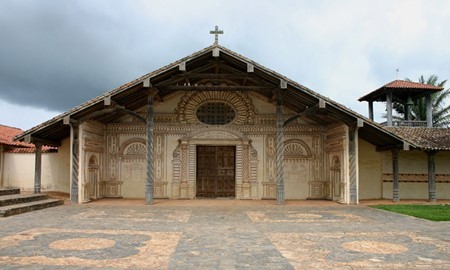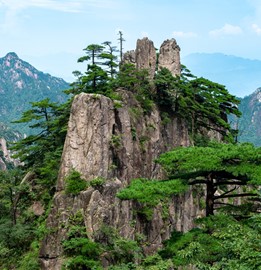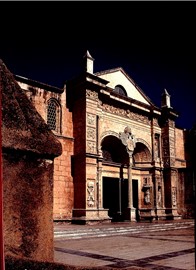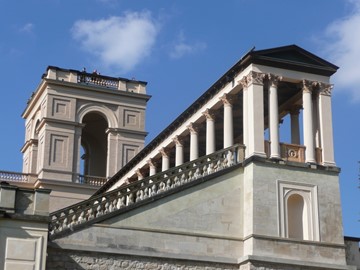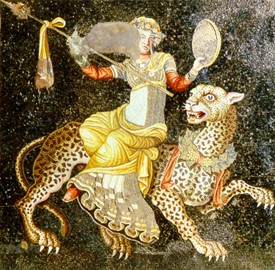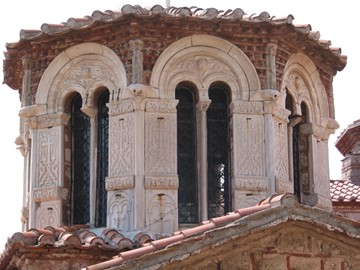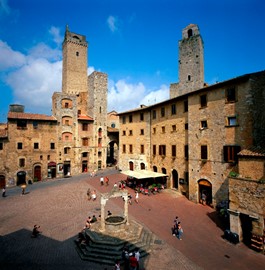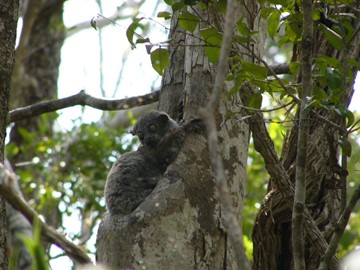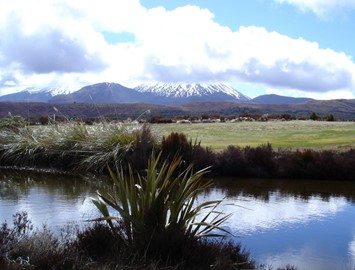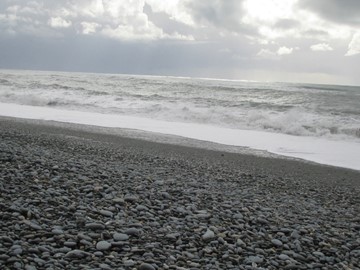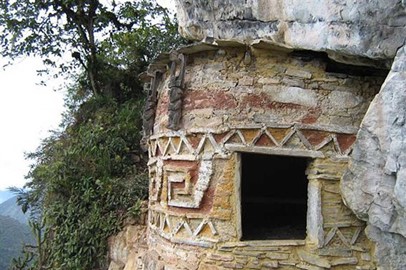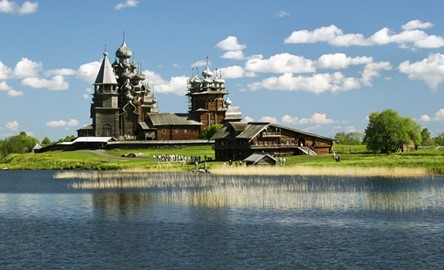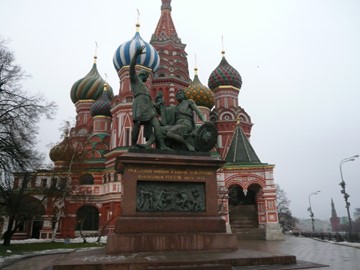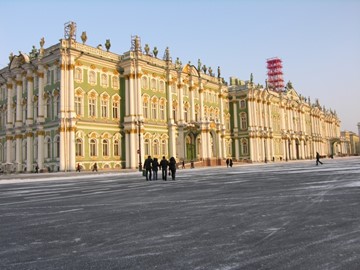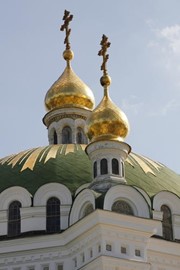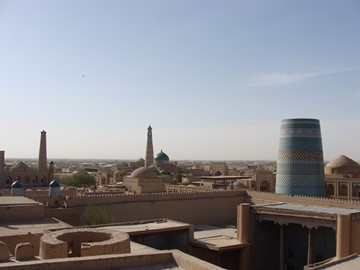year :: 1990
Jesuit Missions of the Chiquitos
Between 1696 and 1760, six ensembles of reducciones (settlements of Christianized Indians) inspired by the ‘ideal cities’ of the 16th-century philosophers were founded by the Jesuits in a style that married Catholic architecture with local traditions. The six that remain – San Francisco Javier, Concepción, Santa Ana, San Miguel, San Rafael and San José – make up a living heritage on the former territory of the Chiquitos.
Huangshan
Huangshan, a UNESCO World Heritage site in China, is a dramatic mountain range famed for its jagged granite peaks, twisted pines, and sea of clouds. Revered in Chinese art and poetry, it features ancient trails, hot springs, and misty vistas that captivate visitors. This natural wonder blends geological splendor with cultural significance, inspiring awe and exploration.
Santo Domingo
Santo Domingo, a UNESCO World Heritage site in the Dominican Republic, is the oldest European colonial city in the Americas, founded in 1496. Featuring cobblestone streets, a grand cathedral, and fortified walls, it reflects Spanish colonial architecture and history. This vibrant site offers a window into the New World’s early settlement and cultural legacy.
Potsdam
The Palaces and Parks of Potsdam and Berlin, a UNESCO World Heritage site in Germany, form a magnificent ensemble of Prussian architecture and landscaped gardens from the 18th and 19th centuries. Highlights include the opulent Sanssouci Palace and its terraced gardens, reflecting royal elegance. This vast complex showcases a blend of Baroque, Rococo, and Neoclassical styles, designed for monarchs like Frederick the Great. The sprawling parks, dotted with pavilions and fountains, exemplify meticulous plannin... Read More
Delos
Delos, a UNESCO World Heritage site in Greece, is a small, uninhabited island renowned for its rich archaeological significance. Once a thriving religious and commercial center in antiquity, it is celebrated as the mythological birthplace of Apollo and Artemis. The site features well-preserved ruins, including temples, mosaics, and the famous Terrace of the Lions, offering a glimpse into ancient Greek civilization. Today, it stands as a testament to its historical and cultural importance, attracting visitor... Read More
Daphni, Hosios Loukas and Nea Moni of Chios
Daphni, Hosios Loukas, and Nea Moni of Chios are three UNESCO World Heritage sites in Greece, renowned for their exceptional Byzantine architecture and art. These monasteries, dating from the 11th and 12th centuries, feature stunning mosaics and frescoes that exemplify the artistic and religious mastery of the era. Each site reflects the cultural and historical significance of the Byzantine Empire, offering a glimpse into its architectural innovation and spiritual heritage. Together, they stand as well-pres... Read More
San Gimignano
San Gimignano, a UNESCO World Heritage site in Italy, is a medieval hilltop town renowned for its well-preserved tower houses, which earned it the nickname 'The Manhattan of the Middle Ages.' Its historic center features Gothic and Romanesque architecture, including the Collegiate Church with its striking frescoes and the Piazza della Cisterna. This Tuscan gem exemplifies a feudal society’s urban planning and cultural legacy, offering a glimpse into 13th- and 14th-century life.
Tsingy de Bemaraha
Tsingy de Bemaraha, a UNESCO World Heritage site in Madagascar, is a striking limestone karst landscape featuring jagged peaks, deep canyons, and a network of underground rivers. This unique geological formation, often called a 'stone forest,' hosts diverse ecosystems with rare plant and animal species, including lemurs and endemic flora. Its rugged terrain and natural beauty make it a globally significant site for biodiversity and geological study.
Tongariro
Tongariro National Park, a World Heritage site in New Zealand, is renowned for its stunning volcanic landscapes and cultural significance. Established in 1887, it features active volcanoes, including Mount Tongariro, Mount Ngauruhoe, and Mount Ruapehu, which offer dramatic scenery and diverse ecosystems. The park holds deep spiritual importance to the Māori people, reflected in its designation as one of the world’s first dual World Heritage sites for both natural and cultural value. Visitors can explore its... Read More
Te Wahipounamu
Te Wahipounamu is a UNESCO World Heritage site located in New Zealand, recognized for its outstanding natural beauty and geological significance. It encompasses a diverse landscape of rugged mountains, glaciers, fjords, and rainforests, hosting a rich variety of unique flora and fauna, including ancient species like the takahe and kiwi. The site is also culturally significant, tied to Māori heritage and traditional resource use, making it a globally important conservation area.
Río Abiseo
Río Abiseo National Park, a UNESCO World Heritage site in Peru, is renowned for its exceptional biodiversity and archaeological significance. This protected region harbors a rich variety of flora and fauna, including rare species like the yellow-tailed woolly monkey. The park also contains over 30 pre-Columbian archaeological sites, most notably the Gran Pajatén ruins, offering valuable insights into ancient Andean civilizations. Its remote location and pristine ecosystems make it a critical conservation ar... Read More
Kizhi Pogost
Kizhi Pogost, a UNESCO World Heritage site in Russia, is an architectural marvel featuring two 18th-century wooden churches and an octagonal bell tower, all constructed without nails. The centerpiece, the Church of the Transfiguration, boasts 22 domes and intricate craftsmanship, reflecting traditional Russian carpentry techniques. This historic ensemble, located on an island, offers a glimpse into Russia’s cultural and religious heritage, preserved as a testament to its architectural ingenuity.
Kremlin and Red Square, Moscow
The Kremlin and Red Square in Moscow form a historic World Heritage site in Russia, recognized for their cultural and political significance. The Kremlin, a fortified complex, has served as the seat of Russian power for centuries, housing palaces, cathedrals, and government buildings with architecture spanning medieval to modern times. Adjacent Red Square, a vast public plaza, is famous for landmarks like Saint Basil’s Cathedral and Lenin’s Mausoleum, reflecting Russia’s rich history and artistic legacy. To... Read More
Saint Petersburg
The Historic Centre of Saint Petersburg, a UNESCO World Heritage site in Russia, is famed for its breathtaking architecture, deep historical roots, and cultural importance. Established in 1703 by Tsar Peter the Great, it features splendid palaces, elaborate churches, and top-tier museums, such as the Hermitage, a global leader among art galleries. Its charming canals and graceful bridges showcase a mix of Baroque and neoclassical designs, giving it the title 'Venice of the North.' The city, highlighted by l... Read More
Kyiv
Saint-Sophia Cathedral and Kyiv-Pechersk Lavra, a UNESCO World Heritage site in Ukraine, represent remarkable examples of Eastern Orthodox architecture and monastic life. The cathedral, dating back to the 11th century, features stunning mosaics and frescoes, reflecting its historical role as a spiritual and cultural center. Kyiv-Pechersk Lavra, a sprawling monastery complex, is renowned for its underground caves, golden-domed churches, and centuries-old relics, attracting pilgrims and visitors alike. Togeth... Read More
Itchan Kala
Itchan Kala, a UNESCO World Heritage site in Uzbekistan, is the historic inner town of Khiva, encircled by towering brick walls that once sheltered caravans before their desert journey to Iran. This well-preserved gem showcases Central Asian Islamic architecture with notable structures like the Djuma Mosque, ornate mausoleums, and grand palaces from the 19th century, reflecting its rich cultural legacy. Recognized in 1990, it stands as a testament to the region’s historical significance along the Silk Road.... Read More
